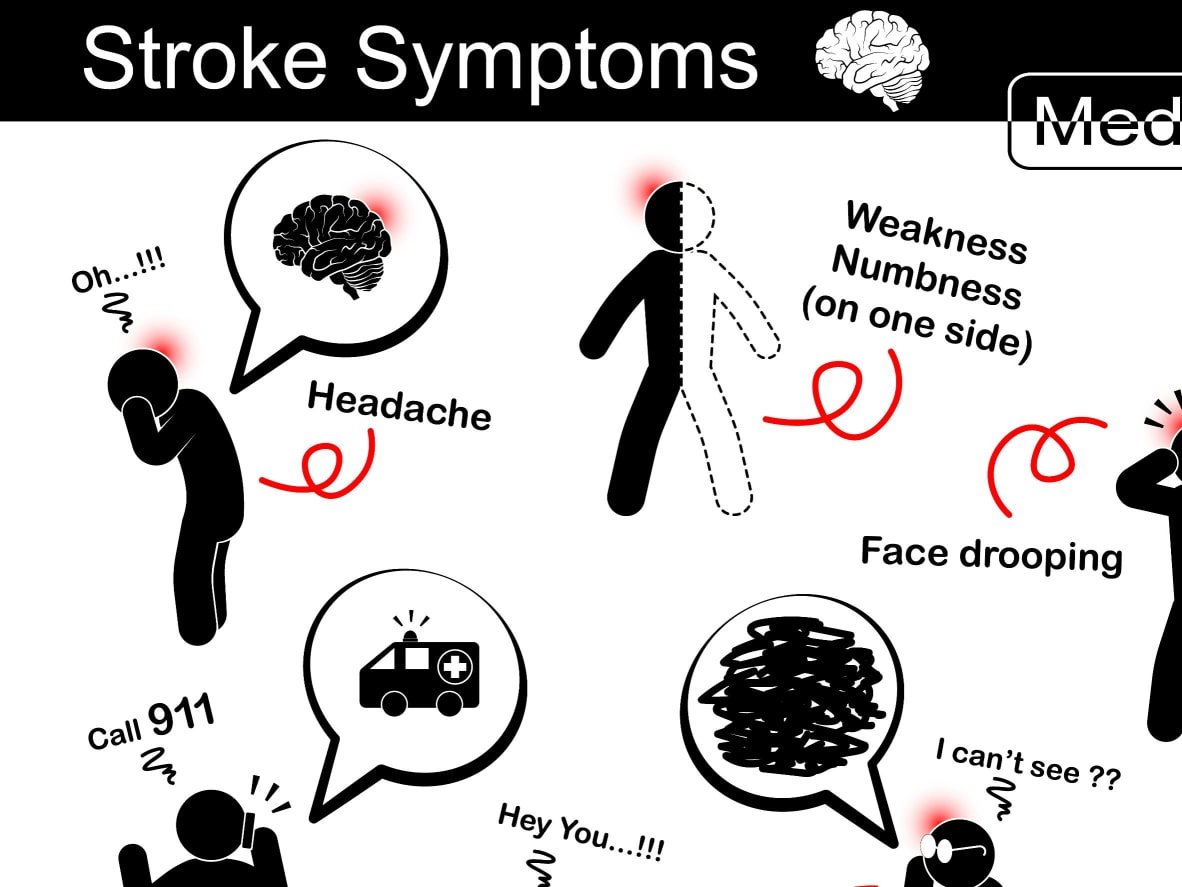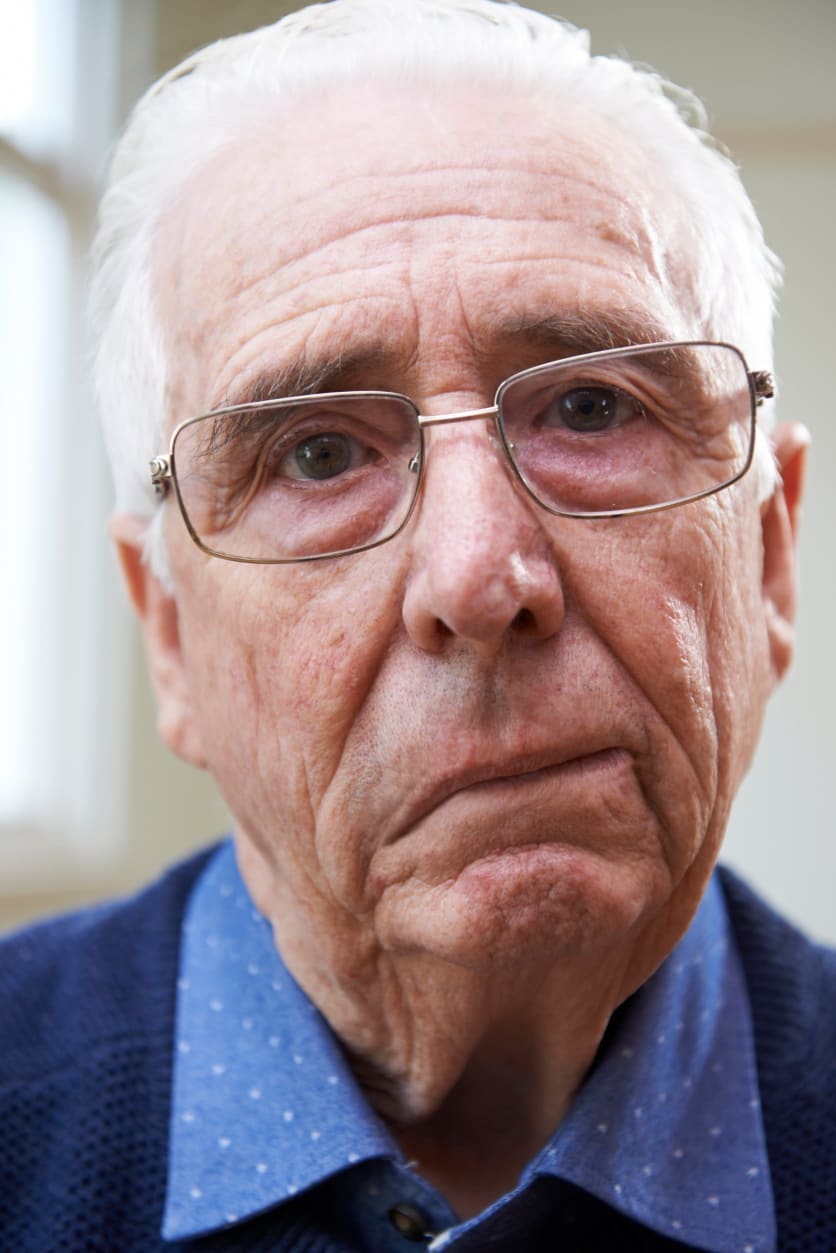Louise Wates looks at the signs of stroke, and why prevention is better than intervention.
In June 2021, there was a news story about a man who was looking for the ‘guardian angel’ who helped him when he was suffering from a stroke.
Mathew O’Toole, 47, was reported to be sitting on a bench outside a coffee shop in London when he began vomiting and sweating.
A nurse, who happened to be passing by, recognised that O’Toole was having a stroke and called an ambulance, probably saving his life.
This was a story that resonated with me. A decade ago, I spent about a year volunteering for a charity set up to help people who had survived a stroke.
There was a moment when I was left with the phone in my hand, wondering whether to make a fuss
Symptoms of stroke
On its website, the NHS describes as stroke as a serious life-threatening medical condition that happens when the blood supply to part of the brain is cut off.
Symptoms of risk include obesity, insulin resistance, high blood pressure and high cholesterol.
In 2014, a study from the Kyoto University Graduate School of Medicine, Japan, also found a more curious sign to indicate higher risk.
Struggling to stand on one leg for more than 20 seconds, it was reported, was linked to an increased risk for stroke, small blood vessel damage in the brain, and reduced cognitive function in otherwise healthy people.
Knowing the signs of a stroke can help to save a person’s life or reduce the stroke’s impact.
If you suspect you or someone else is having a stroke, you need to act quickly.
The ‘FAST’ campaign lists common signs:
- Face – the face may have dropped on one side, the person may not be able to smile, or their mouth or eye may have dropped.
- Arms – the person with suspected stroke may not be able to lift both arms and keep them there because of weakness or numbness in one arm.
- Speech – their speech may be slurred or garbled, or the person may not be able to talk at all despite appearing to be awake; they may also have problems understanding what you’re saying to them.
- Time – it’s time to dial 999 if you see any of these signs or symptoms.

What is a mini stroke?
People can also experience what is called transient ischaemic attack (TIA or mini stroke), which can occur in the weeks before a major stroke.
Seeking medical help after a TIA can help to prevent a major stroke; but recognising the signs can be difficult.
One of the stroke survivors I would chat with told me that he had suffered a TIA about three weeks before suffering from the major stroke, but he hadn’t realised what it was, thinking he had just had a “funny turn”.
It was a situation I would later relate to when a relative (let’s call her J) suffered a TIA in front of me.
Standing up, she momentarily lost her balance, but quickly corrected herself.
Because she had been suffering with an ear infection at the time, she thought that had been the reason for her momentary stumble. But just for a split moment, I saw her mouth droop.
Knowing that a mouth drooping to one side was a sign of a stroke, I picked up the phone to call for an ambulance.
J, feeling and suddenly looking absolutely fine, protested and told me I was being ridiculous.
There was a moment when I was left with the phone in my hand, wondering whether to make a fuss.
I decided to call 999. When the ambulance arrived, paramedics found J’s blood pressure to be dangerously high and gently persuaded her that she really did need to go to hospital.
Learning about strokes
By the time I arrived at the hospital and found her in A&E, J was already siting up in bed looking fit as a fiddle.
She was also getting thoroughly bored and talking about discharging herself. But then her face suddenly drooped completely on one side.
Terrified, I looked for help but by the time I returned with a nurse in tow, J was looking absolutely fine and a picture of health.
“Her mouth was drooping!” I told the nurse, thinking that she must have taken me for an idiot.
“Oh, it’s coming and going, is it?” the nurse said calmly.
“It can do that?” I asked. Nothing in the ‘FAST’ ads or even what I had learnt on my volunteering days had taught me that.

Understanding the signs of stroke
Thankfully, 11 years on J is alive and well. But after that incident, I became somewhat evangelical about people understanding the signs and symptoms of stroke.
As I learnt, even though I had an idea of what a stroke might look like, I didn’t understand the range of ways they can present – and it is only because of that momentary mouth droop that I called for help.
In an ideal world, any one of us should be able to recognise the signs, and people like Mathew O’Toole wouldn’t have needed a nurse to call for help.
Unfortunately, it can be all too easy to think that a stroke sufferer is drunk.
Gut microbiome and stroke
For any of us, prevention is always better than intervention.
A healthy diet, regular exercise, not exceeding more than 14 units of alcohol a week, and not smoking are all considered to be ways of reducing our risk.
Stress is also a known risk factor, as is sleep apnoea.
Health in childhood can be important, and potentially the gut microbiome too.
Meanwhile, a wholefood diet with plant proteins, leafy green vegetables, fruit and wholegrains is associated with reduced risk.
The NHS also says that for most people, at least 150 minutes (two and a half hours) of moderate-intensity aerobic activity, such as cycling or fast walking, every week is recommended.
Individuals recovering from a stroke should discuss any exercise plans with a rehabilitation team.
Enjoyed this article?
Read about low mobility exercise
For articles and recipes subscribe to Optimum Nutrition
Discover our courses in nutrition






